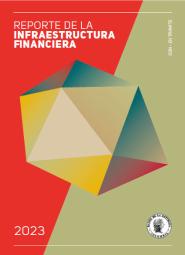Conclusions from the 83rd Session of the Financial System Coordination and Monitoring Committee
During the 83rd session of the Financial System Coordination and Monitoring Committee, which was held today between the Minister of Finance and Public Credit, the Governor of Banco de la República (the Central Bank of Colombia), the Financial Superintendent, the Director of the Financial Institutions Guarantee Fund - Fogafín, and the Director of the Financial Regulatory Unit (URF in Spanish), the main trends of the leading indicators of the financial system and the prospects for the remainder of 2022 were analyzed.
A financial system that manages economic risks and remains stable
The members of the Committee noted that the joint analysis of macroeconomic conditions and significant trends in the financial situation of households, credit, liquidity, and funding shows that, while the presence of risk factors has led to constant monitoring of the warning signals on the financial system, there is evidence of active and preventive management by the authorities and entities that have allowed stability to be preserved, while the supply of credit resources to the Colombian economy remains stable.
This is consistent with prudential indicators at appropriate levels. In fact, the figures to July 2022 show that the capital adequacy ratio and the liquidity indicator remain loose with respect to their regulatory minimums [1] at levels of 17.57% and 180.8% [2], respectively, a positive and sustained real portfolio growth of 5.71% with a moderate non-performing loans indicator of 3.68%.
Risk Analysis and Warning Signs
- Even though the consumer portfolio has been showing signs of moderation in its growth rate compared to its long-term trend, the increase in normalizations, the increased use of credit card limits, and the performance of the quality of the loan portfolio such as credit cards and free investment are factors that require continued monitoring of the actual growth of this portfolio.
- The behavior of the financial balance of households must continue to be monitored, to the extent that factors such as sustained increases in consumption and leverage, in an environment of inflationary pressures and rising interest rates, would put pressure on the debt burden of these actors.
- In terms of liquidity, the average increase in the cost of term funding is due to various factors, such as the increase in the monetary policy rate, expectations about the future monetary policy rate, and the behavior of depositors. There is no clear evidence that it is a consequence of compliance with regulatory requirements such as the Net Stable Funding Ratio (NSFR).
Conclusions
The members of the Committee concluded that the banking system keeps good behavior, which has resulted in a strengthening and creditworthiness that allows them to continue carrying out financial intermediation in the medium and long term.
However, given the signs identified in the behavior of the balance sheet and the debt burden of households, the network authorities consider it prudent to closely monitor the growth trends and quality of the consumer loan portfolio and the household debt to prevent the occurrence of credit risks, and if necessary, take timely action in a coordinated manner.
Finally, the members of the committee confirm their commitment to work together on the roadmap defined by the recommendations made in 2021 by the International Monetary Fund and the World Bank in the framework of the Financial Sector Assessment Program (FSAP).
See the main trends in the financial system more in detail in the following reports:
Financial System Update Report
Financial Stability Report
Financial System Update Report (only available in Spanish)
Financial Stability Report (only available in Spanish)
[1] Regulatory minimum of total capital adequacy: 9.0%, regulatory minimum of the Short-Term Liquidity Indicator (LRI) 100%.
[2] The Liquidity Risk Indicator corresponds to the most recent weekly cut-off in September.




















































